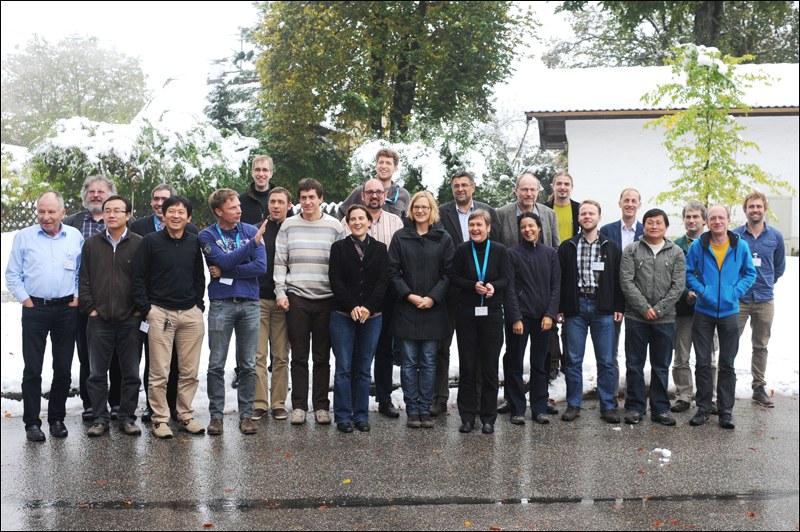TAS Workshop 2013 – Winter’s Onset an Unexpected Guest!
31 October 2013

Thirty-two scientists from Europe and Japan attended the scientific workshop on “Single Crystal Spectroscopy: Multi-TAS or ToF?” which the Jülich Centre for Neutron Science (JCNS) of Forschungszentrum Jülich held in Murnau, Germany, from 10 - 11 October, 2013. During the night, winter’s silent arrival brought with it heavy snowfall, resulting in streets and train tracks blocked with snow. However, this unexpected event did not inhibit the lively discussions centred on the workshop’s fourteen oral presentations.
Three-axis spectrometers (TAS) are recognized by scientists as the instruments of choice for single crystal spectroscopy, a non-destructive analytical technique which provides detailed information about atomic motions within crystal lattices. Continuous improvements and upgrades using modern neutron optics and technology ensure that these instruments are always maintained to the latest technical standards. With recent upgrades, optional multiplexing secondary spectrometers have also been developed or installed at several of the three-axis spectrometers . These allow the acquisition of more information in a single scan; as a result, measurements are expected to be made faster and more efficiently. In addition, the time-of-flight (TOF) technique is a significant improvement on single crystal spectroscopy and has become a powerful complement - or alternative - to TAS spectroscopy.
During the workshop, presentations from three-axis instrument scientists on multiplexing options and from TOF spectrometer scientists from reactor as well as spallation sources gave an overview of all options, both existing and planned. Attendees had the opportunity to explain their wishes and needs, and shared their experiences from the user’s point of view.

In this way, it became clear that the multiplexing option can turn into a rather complex set-up compared to standard TAS or TOF techniques. To cite from the title of one of the talks, for the instrument scientist, it is important to “trade efficiency against complexity” and possibly even to focus on certain modes of operation. User-friendliness is one of the crucial aspects to be tackled. The software currently available for planning an experiment and evaluating and visualizing the data is incomprehensible and more time-consuming than for standard TAS. Users must be informed about how to choose the most effective strategy for their experiments.
The workshop was rounded off by an excursion to the Münter-Haus, the home of the expressionist painters Wassily Kandinsky and Gabriele Münter and their many guests from 1909 – 1914.
Our sincere thanks go to all attendees for the stimulating and pleasant atmosphere!
